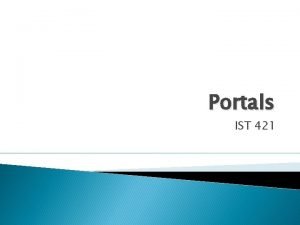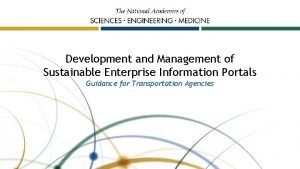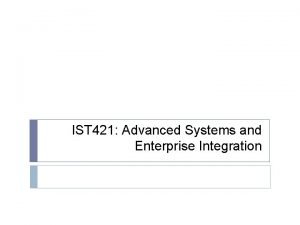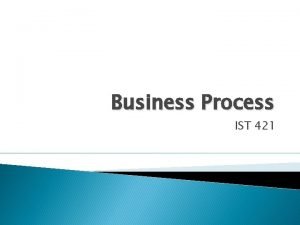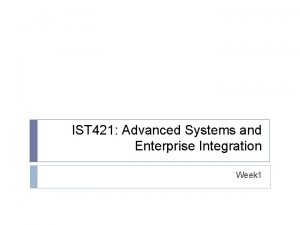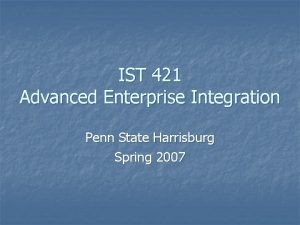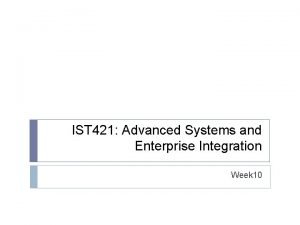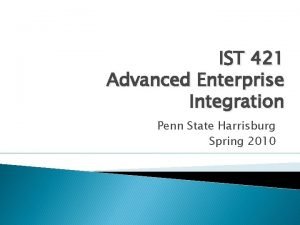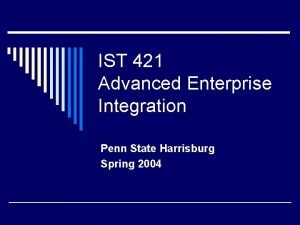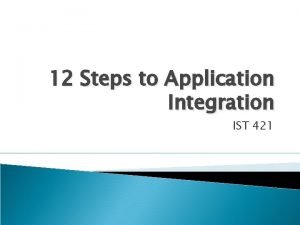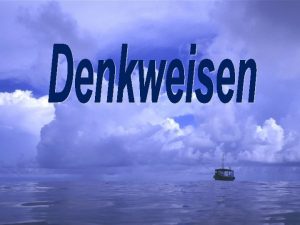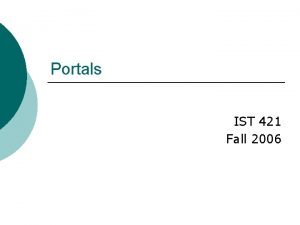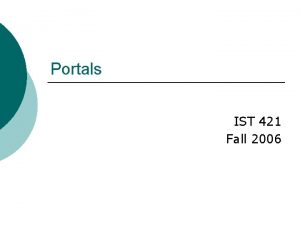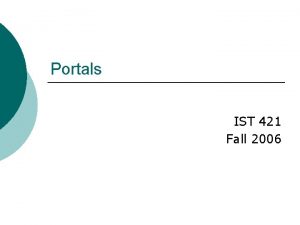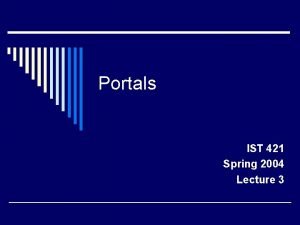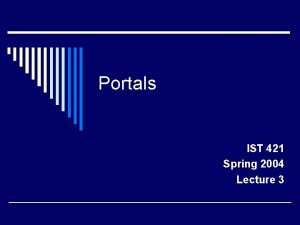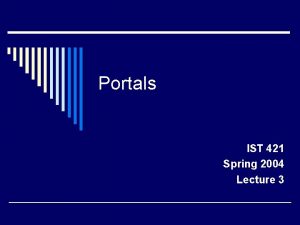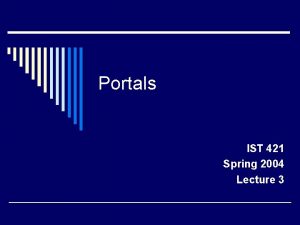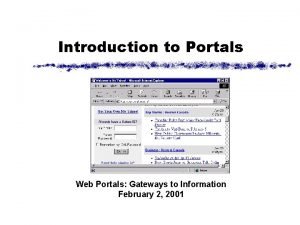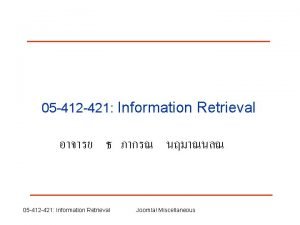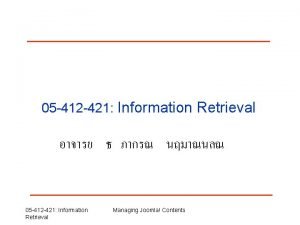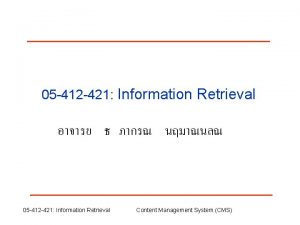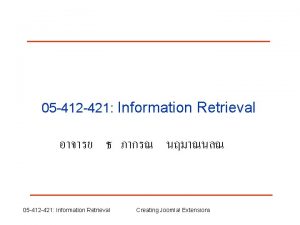Portals IST 421 Enterprise Information Portals doorway to

















- Slides: 17

Portals IST 421

Enterprise Information Portals – doorway to a focused set of resources either internal or external Targeted for a specific audience ◦ Employees, customers, suppliers Serve as a single coherent view of information aggregated from different sources

Enterprise Information Portals Back Office Systems - ERP, financials, human Front Office Systems – sales force automation, Personal Productivity Systems – word resources, engineering, process automation/workflow, project management customer relationship management, help desk, marketing automation processor, spreadsheet, presentation, contact manager, personal information manager

Enterprise Information Challenges Managed data ◦ Legacy systems, proprietary systems ◦ Disconnected islands of automation Unmanaged data ◦ Ad-hoc productivity tools ◦ Chaotic access and exchange ◦ Restricted publication rights

Enterprise Information Portals Connect to each system through a point of integration ◦ User interface, database, application server Today, more information flows through user interfaces than automatically through backend integration

Portal Advantages Supports a noninvasive approach Don’t have to circumvent firewalls or application-to-application security Common user interface: web browser Faster to implement than real-time information exchange Technology is mature with many portaloriented applications to learn from

Portal Disadvantages Information does not flow in real time Requires human interaction Information must be abstracted through another application logic layer – may add complexity Security is a concern when data is being extended to users over the Web

Portal Evolution Single-System Portals ◦ Single enterprise systems that have their user interfaces extended to the Web Multiple Enterprise System Portals ◦ Multiple enterprise systems information is funneled through a single Web-enabled application ◦ EX: Portal at Penn State

Portal Evolution Trading Community Portals ◦ Multiple enterprise system portal is extended to include systems within many companies – trading community portal or digital exchange

Portal Architecture Made up of components: ◦ ◦ ◦ Web clients Web servers Database servers Back-end applications Application servers

Portal Server Architecture From The XML Handbook by Goldfarb and Prescod, Prentice Hall PTR, 2001.

Portal Architecture Web Clients – any device able to run a Web browser and display HTML and graphics ◦ PC, PDA’s, cell phones Web Servers – file servers able to convert information into HTML and deliver to a Web browser using HTTP

Portal Architecture Database Servers – work as a traditional client/server architecture Back-End Applications – mix of applications such as SAP, custom applications, client/server applications ◦ Portals gather appropriate information from these systems and present it to the user interface

Portal Architecture Application Servers – provide a middle layer between the back-end applications, databases, and the Web server.

Portal Server Architecture Personalization ◦ Content delivery agents (CDA) is a program or script that creates a window for providing a data source ◦ Each user is assigned a “role” which specifies a collection of pages, CDS’s, and a default theme ◦ User may change the layout of any page, change the color and background images of the desktop

Portal Servers Three requirements for portal servers: ◦ Performance: reliability, availability, scalability ◦ Content distribution to PC’s, thin clients, mobile devices such as phones and PDA’s; personalization ◦ Business process integration

Krispy Kreme’s Portal mykrispykreme. com Opening screen offers weather news ◦ Facilitates production management Architectural renderings & blueprints Order supplies & doughnut mix which eliminates errors Manager “ 2% to 3% increase in profitability just from the portal” Virtual help desk ◦ Calibrate a coffee grinder ◦ Fix a fryer
 Enterprise information portals
Enterprise information portals Enterprise information portals
Enterprise information portals Language
Language A tall man stood in the doorway
A tall man stood in the doorway Ist 421
Ist 421 Ist 421
Ist 421 Ist 421
Ist 421 Ist 421
Ist 421 Advanced systems integration
Advanced systems integration Ist 421
Ist 421 Ist 421
Ist 421 Ist 421
Ist 421 Winter kommt flocken fallen nieder
Winter kommt flocken fallen nieder Es war eine mutter
Es war eine mutter Klassendienst
Klassendienst Es ist herbst bunte blätter fliegen
Es ist herbst bunte blätter fliegen Zu glauben ist schwer. nichts zu glauben ist unmöglich
Zu glauben ist schwer. nichts zu glauben ist unmöglich Putting the enterprise into the enterprise system
Putting the enterprise into the enterprise system
